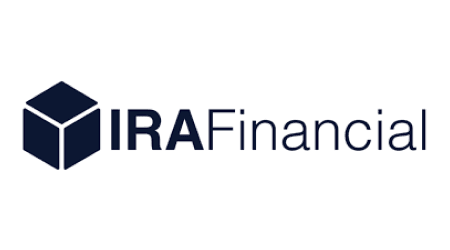-
Commitment to our readers
18 years
Helping you save money
Reviewed
by experts
Cited by
major publications
Finder maintains full editorial independence to ensure for our readers a fair assessment of the products, brands, and services we write about. That independence helps us maintain our reader's trust, which is what keeps you coming back to our site. We uphold a rigorous editorial process that ensures what we write and publish is fair, accurate, and trustworthy — and not influenced by how we make money.
We're committed to empowering our readers to make sound and often unfamiliar financial decisions.
We break down and digest information information about a topic, product, brand or service to help our readers find what they're looking for — whether that's saving money, getting better rewards or simply learning something new — and cover any questions you might not have even thought of yet. We do this by leading with empathy, leaning on plain and conversational language that speaks directly, without speaking down.
Invest in alternative assets, with tax advantages
- Choose from a variety of self-directed retirement account options
- Invest in alternative assets like real estate, crypto, private businesses and more
- Take advantage of tax benefits to grow your retirement savings
Paid non-client promotion. Finder does not invest money with providers on this page. If a brand is a referral partner, we're paid when you click or tap through to, open an account with or provide your contact information to the provider. Partnerships are not a recommendation for you to invest with any one company. Learn more about how we make money.
Finder is not an advisor or brokerage service. Information on this page is for educational purposes only and not a recommendation to invest with any one company, trade specific stocks or fund specific investments. All editorial opinions are our own.
What is a self-directed IRA (SDIRA)?
A self-directed IRA is a type of individual retirement account (IRA) that provides more flexibility in terms of the investments you can hold. Whereas you can hold traditional investments such as stocks and exchange-traded funds (ETFs) in a regular IRA, SDIRAs let you also have various alternative investments. These include everything from claims to real estate to private equity to cryptocurrencies like Bitcoin (BTC) or Ethereum (ETH). Though you can invest in some of these assets indirectly through, say, an ETF, you typically can’t invest directly in these assets in standard IRAs.
Because SDIRAs can be complicated and alternative assets carry more risk and regulatory requirements, most brokerages that offer standard IRAs do not offer SDIRAs. Still, SDIRA custodians, like regular IRA custodians, must be IRS-approved. These custodians can be banks, trust companies or broker-dealers.
At a glance
- A self-directed IRA is a tax-advantaged retirement account that allows investments in most assets. This includes traditional investments such as stocks and ETFs, as well as real estate, precious metals, cryptocurrencies, foreign currencies and other alternative assets.
- Only certain custodians allow SDIRAs.
- SDIRAs are best suited for experienced investors who are comfortable researching and choosing their own investments, proactively managing their accounts and navigating the unique risks of these accounts.
Understanding a self-directed IRA
Self-directed IRAs can be in the form of either a traditional, Roth, SEP or SIMPLE IRA. The biggest difference between an SDIRA and a standard IRA is the available investment options.
Whereas many IRA custodians only permit traditional investments such as stocks, bonds, ETFs and mutual funds, SDIRAs permit just about any type of investment. The law only prohibits investments in life insurance and collectibles.
As an SDIRA investor, you must be comfortable researching and managing your own investments, more so than you would with traditional assets. Alternative investments can be difficult to understand, costly and often involve complex tax rules. It’s up to you to ensure your investments meet the requirements set by law — and the failure to follow these rules can result in additional taxes, penalties and even the loss of your account’s tax-advantaged status.
Self-directed IRA contribution limits, withdrawal rules and taxes
The following contribution, withdrawal and tax rules apply to self-directed IRAs just as they do with standard IRAs:
- Contribution limits. In 2025, you can contribute up to $7,000 total to your traditional and/or Roth IRA ($8,000 if age 50 or older). For a SEP IRA, an employer can contribute up to either $77,000 or 25% of an employee’s yearly compensation. And for a SIMPLE IRA, an employee can contribute up to $15,500 per year.
- Withdrawal rules. The minimum age for withdrawals from an IRA is 59 and a half. Withdrawals prior to this age can incur a 10% early-withdrawal penalty. For those with a SIMPLE IRA, the penalty increases to 25% if you withdraw money within two years of when you first participated in your employer’s plan. For traditional, SEP and SIMPLE IRAs, you must start taking withdrawals from the account at age 73. Roth IRAs have no such required minimum distributions (RMDs).
- Tax implications. With an IRA, the Traditional, SEP, SIMPLE or Roth designation determines available tax benefits. Traditional, SEP and SIMPLE IRA contributions are made pre-tax and are tax-deductible in the year the contribution is made, while Roth IRA contributions are made with post-tax cash and qualified withdrawals are tax-free.
How to set up a self-directed IRA
It’s incredibly important to conduct due diligence when selecting a custodian for your SDIRA. These accounts are more complex to open and manage and riskier to maintain than regular IRAs.
- Find a custodian. Research and find an IRS-approved custodian that offers SDIRAs. Note that most major brokerages do not offer this account type. Check with your chosen custodian to see which assets they allow. For example, Bitcoin IRA is a custodian that can hold both crypto assets or gold bullion for you.
- Select assets to purchase. Research and choose the assets you want to invest in through your SDIRA. If your custodian doesn’t allow for self-trading, you may need to direct your custodian to fund your investment on your behalf.
- Send funds. Deposit money and invest yourself or direct your SDIRA custodian to buy the assets on your behalf. If you’re purchasing the assets from a dealer separate from your custodian, you may have to deposit funds with both parties to pay for costs related to receiving the assets.
- Prepare to pay monthly or quarterly fees. SDIRA custodians typically charge monthly fees, which vary depending on your portfolio’s value.
Advantages of self-directed IRAs
The biggest advantage of an SDIRA is that it lets you buy almost any asset with a tax-advantaged account — everything except life insurance and collectibles. Allowable assets include, but are not limited to:
- Commodities such as physical gold
- Cryptocurrencies
- Promissory notes
- Real estate
- Foreign currency
- Hedge funds
- Startups
- Private equity
- Private debt
Compare this to a regular IRA, which typically only lets you invest in traditional assets, such as stocks, bonds, ETFs and mutual funds. While they may provide indirect exposure to some of these assets through shares of ETFs or trusts, regular IRAs can’t compete with their self-directed counterparts in terms of available investments.
What’s more, these alternative assets may provide potentially higher returns than stocks, bonds, etc. For example, SDIRAs let you invest in private equity. Private equity is stake in a private company, or a company whose shares aren’t for sale on the public market. This type of investment has the potential to appreciate dramatically, especially if the private company eventually goes public.
An example of private equity offering outsized returns in a self-directed IRA is when famed investor Peter Theil turned a $2,000 Roth IRA into a $5 billion windfall. According to Forbes, Thiel purchased stock in PayPal, a private company at the time, in 2001 via a Roth IRA when PayPal shares were worth 30 cents apiece. By 2002, those shares were each worth $19 when eBay finalized its acquisition of PayPal. Theil eventually sold some of his stock to purchase shares in other private companies, all without facing tax implications.
Risks of self-directed IRAs
Despite their flexibility in terms of allowable investments, SDIRAs are risky on a number of levels.
The following are some of the major risks to consider:
- You’re solely responsible for your account and its investments. The key word in “self-directed IRA” is “self.” You’re in charge of your SDIRA, which means you’re responsible for vetting the quality and legitimacy of each investment and making sure you don’t run afoul of any IRS rules. For example, the gold and silver that you hold in your account have to be of a particular quality, and it’s up to you to find a vendor that ensures the gold or silver they sell you is of that required quality. If these assets are below the required quality threshold, you risk facing fines and penalties from the IRS.
- Lack of liquidity. It can take longer to sell assets like real estate, private equity or physical gold, because the markets for these assets tend to be less liquid than public equity markets. In other words, it can be difficult to find buyers of certain assets when you’re ready to sell.
- High fees. Opening and maintaining SDIRAs include several fees you typically don’t find with a regular IRA. For example, fees for a self-directed gold IRA include an account setup fee (about $50), custodial fees (from $75 to a few hundred dollars) and transaction fees (about $40 for each transaction). These extra fees can cut into your gains.
- Riskier investments. Certain assets you can purchase in your SDIRA, like alt coins — crypto assets other than Bitcoin (BTC) — are very volatile financial instruments. For instance, alt coins have historically lost up to 90% of their value within weeks.
- Limited protections around asset quality. As mentioned earlier, some SDIRA custodians only hold your assets and don’t actually sell or evaluate the quality of assets in which you want to invest. For example, gold and other allowable precious metals must be of certain purity levels to hold them in your SDIRA. If these assets do not meet certain purity standards, you will not only lose money as a result of purchasing potentially fraudulent metals but will also face tax and other financial penalties for purchasing prohibited assets with your IRA.
- Custodian manipulation/fraud. Because some SDIRA custodians make money per transaction, they may try to encourage you to purchase certain assets, claiming these assets might increase in value very soon. Legally, custodians aren’t permitted to do this. But if you don’t know better, it’s easy to become a victim and make poor investment decisions based on baseless pitches. If you feel you have been a victim, contact the Commodity Futures Trading Commission (CFTC) to issue a complaint.
- Complex tax rules. If you knowingly or unknowingly break a tax rule and do or invest in something prohibited with your SDIRA, you may owe the IRS taxes and penalties. For example, if you sell, exchange or lease property you already own to your IRA as an investment, you can be penalized and incur additional taxes.
Prohibited investments
You can’t invest in life insurance or collectibles in your SDIRA. If you are caught investing in collectibles in your SDIRA, the amount invested is considered distributed and you’ll have to pay an extra 10% tax.
Examples of collectibles include but are not limited to:
- Artwork
- Rugs
- Antiques
- Metals (with the exception of certain types of bullion)
- Gems
- Stamps
- Coins (except for certain exceptions, like specific types of gold and silver coins)
- Alcoholic beverages
Self-directed IRAs vs regular IRAs
Self-directed IRAs and regular IRAs are the same in regards to contribution limits, withdrawal limits and general tax implications. But they differ in terms of fees and the investments you can hold in the account.
Because of the extra paperwork, tax burdens and complications that come with opening and managing SDIRAs, most regular IRA custodians don’t offer these account types.
Here’s how SDIRAs and regular IRAs compare:
| Self-directed IRA | Regular IRA | |
|---|---|---|
| Examples of investments you can hold |
|
|
| Contribution limits for 2025 |
|
|
| Withdrawal rules |
|
|
| Where to open | Major brokerages typically do not offer SDIRAs, so you have to find a licensed and regulated IRS-approved custodian for your account. | Most banks, brokerages or other financial institutions. |
| Fees | SDIRAs involve a number of fees, including account setup fees, custodial annual maintenance fees, storage fees and transaction fees. | Typically no account setup fees or no-to-little transaction fees. Though an IRA account closing fee may apply. |
| Risks | Risks include having to vet your own investments, exposure to volatile and sometimes illiquid assets and potentially being penalized for violating tax rules. | Stocks, bonds, ETFs and mutual funds, like all investments, include a degree of risk. But typically there are fewer risks associated with investing in a regular IRA as opposed to a self-directed IRA. |
Are IRAs popular in the US?
Do you have an IRA?
| Response | % of Americans |
|---|---|
| I do not have this, but plan on getting it in the next 6 months | 13% |
| I do not have this nor plan on getting it | 56% |
| I currently have this | 31% |
401Ks (44%) are the preferred savings vehicle in the US for retirement. However, about a third (31%) of American adults choose to put their money in an IRA.
Bottom line
Since most regular IRAs limit you to traditional investments, self-directed IRAs can be a great way to add alternative investments to your portfolio while benefiting from the tax advantages of an IRA.
Because SDIRAs are complex, with high fees and delicate tax rules, they probably aren’t the best option for new investors. Even experienced investors need to tread carefully as they navigate these complexities. If you choose to invest via a self-directed IRA, it’s recommended you consult with a tax or financial professional to be sure you stay in compliance with IRS regulations so as to not incur any unwanted fees or penalties.
Frequently asked questions about self-directed IRAs
Sources
Sources
Ask a question
More guides on Finder
-
Top IRA Match Accounts for 2025: Boost Your Retirement Today
Get up to a 3% IRA match with Robinhood and Acorns or a 1% IRA match with Public. See how to qualify here.
-
5 Best Roth IRA Investments [With Insights From CFPs]
The best Roth IRA investments may include a mix of index funds, dividend stocks, bond funds and other long-term investments.
-
5 Best SEP IRA Providers of 2025
Explore the pros and cons of the best SEP IRAs and learn how to open one of these accounts.
-
7 Best Rollover IRA Accounts of 2025
Explore the advantages and shortcomings of the best rollover IRAs for beginners, mobile trading, advanced traders and more.
-
10 Best Roth IRAs: 2025’s Top Picks to Build Your Retirement Savings
Check out our picks of the best Roth IRA accounts for beginners, options traders, hands-off investors and more.
-
10 Best IRA Accounts for 2025: Top Retirement Picks
Check out our picks of the best IRA accounts for beginners, options traders, hands-off investors and more.
-
What is a Roth IRA and how to open one
Learn how Roth IRAs work and who qualifies to open one.
-
Goldco Review 2025: Pros and Cons
Pros and cons to consider before you sign up for a Goldco precious metals IRA.
-
401(k) withdrawal rules: Penalties, fees & how to do it
Need a quick influx of cash? Before you dig into your retirement funds, consider these drawbacks.
-
Estate Planning Checklist
Find everything you need to begin the estate planning process, including a free downloadable estate planning checklist.


